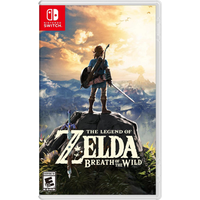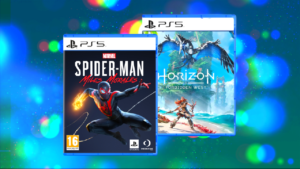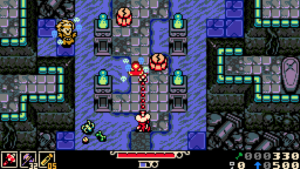Few companies have the wealth of recognizable and exciting characters required to create a platform fighter that could rival the likes of Nintendo’s Super Smash Bros. series. With the help of developer Player First Games, Warner Bros. is trying to use the seemingly endless list of movie and TV studios it owns to do just that, bringing together an eclectic roster of fan-favorite characters that somehow includes Harley Quinn, Bugs Bunny, and Shaggy all at once. While the result makes for some gleeful multiplayer chaos, MultiVersus is ambitious in its laser focus on competitive multiplayer too. That’s left some of the more casual aspects undercooked, but its prioritization of 2v2 online matches still makes for a fresh take on an increasingly crowded genre.
Unlike last year’s competent yet underwhelming Nickelodeon All-Star Brawl, MultiVersus clearly has significant support from the Warner Bros. family and, more importantly, the budget to follow through on Player First’s vision. Not only are iconic faces like the DC superhero trinity of Superman, Batman, and Wonder Woman available to pilot, but so are characters from Steven Universe, The Iron Giant, and even Game of Thrones. The open beta’s initial roster of 17 is a tad small for my taste, but I’m not worried about it in the long term as the cast is already set to expand in the coming months – basketball and Space Jam superstar LeBron James was just added, and Rick and Morty are supposed to join him in August.
While compact, the roster is diverse and brimming with personality thanks to its impressively faithful voice cast. Having actors like John DiMaggio (Jake the Dog), Kevin Conroy (Batman), Matthew Lillard (Shaggy), and Maisie Williams (Arya Stark) reprise their roles goes a long way toward making these characters feel authentic. It’s great to hear the voices I remember from cartoons and movies I grew up on bantering with characters they’ve never had the chance to meet before. Beyond the recognizable, I dig additions like Reindog, too, an original creation that opens up the possibility for more new faces to join the fray down the line.
Puncha Some Buns
Matches in MultiVersus play out as either 1v1, 2v2, or four-player free-for-all battles in places like a spooky Scooby Doo-inspired mansion or the gadget-ridden cavern of the Bat Cave. Unfortunately, the sparse selection of stages are bland and lack identity beyond those two standouts. The other three locations look like they could take place anywhere despite supposedly being based on memorable sites like the Adventure Time treehouse. Thankfully the music does help make up for this, and I look for any opportunity to brawl in the Sky Palace just to hear its wonderful instrumental cover of the Steven Universe theme.
Like in Smash Bros., your goal is to build up damage on your opponent in order to make it easier to send them flying off into the void at the edge of the screen for a kill. Characters have two attack buttons to work with, representing normal hits and flashier special attacks, with different moves performed by pointing the analog stick up, down, or to the side while unleashing an attack. It’s recognizable, but a well-executed system, and controlling your character is as quick and fluid as I’d hope the chaotic gameplay of a platform fighter would be.
“
I almost always feel in complete control, which can be attributed to the tight mobility options available to most of the roster. You can use double jumps and dodges to navigate the airspace, escape danger, avoid projectiles, or line up a devastating assault of your own. A change from the norm is a lack of ledge grabbing, which is why Player First has opted to enable wall jumps that make for exciting, daring saves by sticking to the side of the main platform and leaping to safety instead of falling to your doom.
Another big departure is that the 2v2 mode is meant to be the main way to play, making MultiVersus refreshing and setting it apart from its peers. These team battles are a lot of fun, with each character assigned a class that promotes a specific playstyle to help compliment a partner. Whether that’s the frontline tanks, the hard-hitting bruisers, the agile and deadly assassins, or the trickier ranged mages and support classes; everyone has a role to play in a fight, and your team composition can be vital to succeeding against experienced challengers. It’s great fun discovering how Bugs Bunny and his toon gimmicks pair with the protection and crowd control provided by Wonder Woman’s moves. While I naturally gravitated towards tanks like Superman and The Iron Giant, I’ve also been having a blast learning the intricacies of playing support as Steven Universe and learning about each character to be a better teammate.
You can equip up to four different perks before every match, adding a level of customization to enhance your playstyle, support your partner, or even try to counter your opponents’ team. Three of those can be perks that affect attributes like movement speed or damage dealt, which is amplified in power if your teammate equips the same one. Signature perks fill the fourth slot, modifying specific character attacks and abilities, such as leaving flame walls in the wake of Iron Giant’s jet boosters or Taz hacking up an anvil if he eats an enemy projectile. Perks add a meaningful layer of strategy to each match that I appreciate in every mode, but especially when I’m playing alongside someone I can build a gameplan with.
The unfortunate side effect of that focus on competitive 2v2 is the absence of meaningful local multiplayer options. Currently, you can play with up to four people on one device in team battles and free-for-alls, just like online, but there isn’t enough here to keep my interest with friends if I want to have a chaotic anything-goes party experience. Items occasionally populate in the FFA game type, but none of the rocks, dynamite, and ice weapons are remotely entertaining to use or add surprising moments to the mayhem that’s already playing out. Local multiplayer also means the lack of stages is more glaring, making MultiVersus a disappointing game for casual fun overall.
A Caboodle of Collectables
Characters and perks have to be unlocked, but thankfully MultiVersus takes a big step in the right direction when it comes to free-to-play fighting game monetization. While the free-to-play model comes with a lot of negative connotations and possible pitfalls, it also has the potential to be a boon for fighting games by allowing more people to casually try a game without having to drop a dime on it if they don’t want to. And crucially, Player First has ensured everything that affects gameplay is accessible simply by playing, avoiding any pay-to-win concerns.
Perks are only unlocked either by leveling up characters or by spending the free gold currency that’s earned from playing matches and completing various daily missions and reward tracks. Characters, on the other hand, can be bought with gold, the real-money premium currency called Gleamium, or Character Tickets which are available to those who buy the optional founders packs. Only four characters are unlocked from the start, but I’ve found playing just a couple of hours will earn enough gold to unlock someone new. There’s a nice pace to learning a character or two and then moving on to a new one when you have enough gold.
Gleamium is also used to unlock multiple cosmetic items like character variant costumes, emotes, profile icons, ringout animations, and more. These cosmetics are fun, especially the skins that change the entire aesthetic of a character down to the voice lines, like the Cake the Cat costume for Jake. However, some of the pricing on these items don’t align well with the bundles of Gleamium that can be purchased, which forces you to buy more than needed – that’s not a new business practice, but it’s still a lame one. If you want to invest in Luau Velma or a Batman: The Animated Series skin, it’ll cost you. They’re by no means necessary to purchase, but if the right skin comes around, such as Black Lantern Superman, I’ll definitely be tempted to swag out my main fighter if the price is right. Not every cosmetic costs Gleamium, and there are other ways to snag some of these items in the free and premium season pass rewards and by leveling up each character. I love that these reasons to keep playing and engaging exist even if I’m not throwing down money.






